HSBC 2006 Annual Report Download - page 304
Download and view the complete annual report
Please find page 304 of the 2006 HSBC annual report below. You can navigate through the pages in the report by either clicking on the pages listed below, or by using the keyword search tool below to find specific information within the annual report.-
 1
1 -
 2
2 -
 3
3 -
 4
4 -
 5
5 -
 6
6 -
 7
7 -
 8
8 -
 9
9 -
 10
10 -
 11
11 -
 12
12 -
 13
13 -
 14
14 -
 15
15 -
 16
16 -
 17
17 -
 18
18 -
 19
19 -
 20
20 -
 21
21 -
 22
22 -
 23
23 -
 24
24 -
 25
25 -
 26
26 -
 27
27 -
 28
28 -
 29
29 -
 30
30 -
 31
31 -
 32
32 -
 33
33 -
 34
34 -
 35
35 -
 36
36 -
 37
37 -
 38
38 -
 39
39 -
 40
40 -
 41
41 -
 42
42 -
 43
43 -
 44
44 -
 45
45 -
 46
46 -
 47
47 -
 48
48 -
 49
49 -
 50
50 -
 51
51 -
 52
52 -
 53
53 -
 54
54 -
 55
55 -
 56
56 -
 57
57 -
 58
58 -
 59
59 -
 60
60 -
 61
61 -
 62
62 -
 63
63 -
 64
64 -
 65
65 -
 66
66 -
 67
67 -
 68
68 -
 69
69 -
 70
70 -
 71
71 -
 72
72 -
 73
73 -
 74
74 -
 75
75 -
 76
76 -
 77
77 -
 78
78 -
 79
79 -
 80
80 -
 81
81 -
 82
82 -
 83
83 -
 84
84 -
 85
85 -
 86
86 -
 87
87 -
 88
88 -
 89
89 -
 90
90 -
 91
91 -
 92
92 -
 93
93 -
 94
94 -
 95
95 -
 96
96 -
 97
97 -
 98
98 -
 99
99 -
 100
100 -
 101
101 -
 102
102 -
 103
103 -
 104
104 -
 105
105 -
 106
106 -
 107
107 -
 108
108 -
 109
109 -
 110
110 -
 111
111 -
 112
112 -
 113
113 -
 114
114 -
 115
115 -
 116
116 -
 117
117 -
 118
118 -
 119
119 -
 120
120 -
 121
121 -
 122
122 -
 123
123 -
 124
124 -
 125
125 -
 126
126 -
 127
127 -
 128
128 -
 129
129 -
 130
130 -
 131
131 -
 132
132 -
 133
133 -
 134
134 -
 135
135 -
 136
136 -
 137
137 -
 138
138 -
 139
139 -
 140
140 -
 141
141 -
 142
142 -
 143
143 -
 144
144 -
 145
145 -
 146
146 -
 147
147 -
 148
148 -
 149
149 -
 150
150 -
 151
151 -
 152
152 -
 153
153 -
 154
154 -
 155
155 -
 156
156 -
 157
157 -
 158
158 -
 159
159 -
 160
160 -
 161
161 -
 162
162 -
 163
163 -
 164
164 -
 165
165 -
 166
166 -
 167
167 -
 168
168 -
 169
169 -
 170
170 -
 171
171 -
 172
172 -
 173
173 -
 174
174 -
 175
175 -
 176
176 -
 177
177 -
 178
178 -
 179
179 -
 180
180 -
 181
181 -
 182
182 -
 183
183 -
 184
184 -
 185
185 -
 186
186 -
 187
187 -
 188
188 -
 189
189 -
 190
190 -
 191
191 -
 192
192 -
 193
193 -
 194
194 -
 195
195 -
 196
196 -
 197
197 -
 198
198 -
 199
199 -
 200
200 -
 201
201 -
 202
202 -
 203
203 -
 204
204 -
 205
205 -
 206
206 -
 207
207 -
 208
208 -
 209
209 -
 210
210 -
 211
211 -
 212
212 -
 213
213 -
 214
214 -
 215
215 -
 216
216 -
 217
217 -
 218
218 -
 219
219 -
 220
220 -
 221
221 -
 222
222 -
 223
223 -
 224
224 -
 225
225 -
 226
226 -
 227
227 -
 228
228 -
 229
229 -
 230
230 -
 231
231 -
 232
232 -
 233
233 -
 234
234 -
 235
235 -
 236
236 -
 237
237 -
 238
238 -
 239
239 -
 240
240 -
 241
241 -
 242
242 -
 243
243 -
 244
244 -
 245
245 -
 246
246 -
 247
247 -
 248
248 -
 249
249 -
 250
250 -
 251
251 -
 252
252 -
 253
253 -
 254
254 -
 255
255 -
 256
256 -
 257
257 -
 258
258 -
 259
259 -
 260
260 -
 261
261 -
 262
262 -
 263
263 -
 264
264 -
 265
265 -
 266
266 -
 267
267 -
 268
268 -
 269
269 -
 270
270 -
 271
271 -
 272
272 -
 273
273 -
 274
274 -
 275
275 -
 276
276 -
 277
277 -
 278
278 -
 279
279 -
 280
280 -
 281
281 -
 282
282 -
 283
283 -
 284
284 -
 285
285 -
 286
286 -
 287
287 -
 288
288 -
 289
289 -
 290
290 -
 291
291 -
 292
292 -
 293
293 -
 294
294 -
 295
295 -
 296
296 -
 297
297 -
 298
298 -
 299
299 -
 300
300 -
 301
301 -
 302
302 -
 303
303 -
 304
304 -
 305
305 -
 306
306 -
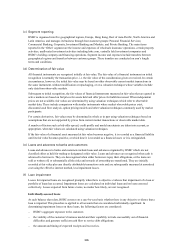 307
307 -
 308
308 -
 309
309 -
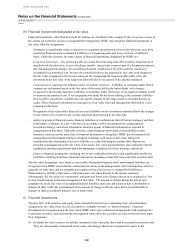 310
310 -
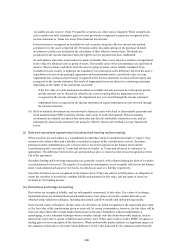 311
311 -
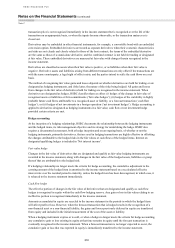 312
312 -
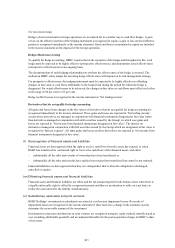 313
313 -
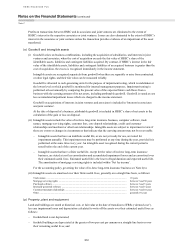 314
314 -
 315
315 -
 316
316 -
 317
317 -
 318
318 -
 319
319 -
 320
320 -
 321
321 -
 322
322 -
 323
323 -
 324
324 -
 325
325 -
 326
326 -
 327
327 -
 328
328 -
 329
329 -
 330
330 -
 331
331 -
 332
332 -
 333
333 -
 334
334 -
 335
335 -
 336
336 -
 337
337 -
 338
338 -
 339
339 -
 340
340 -
 341
341 -
 342
342 -
 343
343 -
 344
344 -
 345
345 -
 346
346 -
 347
347 -
 348
348 -
 349
349 -
 350
350 -
 351
351 -
 352
352 -
 353
353 -
 354
354 -
 355
355 -
 356
356 -
 357
357 -
 358
358 -
 359
359 -
 360
360 -
 361
361 -
 362
362 -
 363
363 -
 364
364 -
 365
365 -
 366
366 -
 367
367 -
 368
368 -
 369
369 -
 370
370 -
 371
371 -
 372
372 -
 373
373 -
 374
374 -
 375
375 -
 376
376 -
 377
377 -
 378
378 -
 379
379 -
 380
380 -
 381
381 -
 382
382 -
 383
383 -
 384
384 -
 385
385 -
 386
386 -
 387
387 -
 388
388 -
 389
389 -
 390
390 -
 391
391 -
 392
392 -
 393
393 -
 394
394 -
 395
395 -
 396
396 -
 397
397 -
 398
398 -
 399
399 -
 400
400 -
 401
401 -
 402
402 -
 403
403 -
 404
404 -
 405
405 -
 406
406 -
 407
407 -
 408
408 -
 409
409 -
 410
410 -
 411
411 -
 412
412 -
 413
413 -
 414
414 -
 415
415 -
 416
416 -
 417
417 -
 418
418 -
 419
419 -
 420
420 -
 421
421 -
 422
422 -
 423
423 -
 424
424 -
 425
425 -
 426
426 -
 427
427 -
 428
428 -
 429
429 -
 430
430 -
 431
431 -
 432
432 -
 433
433 -
 434
434 -
 435
435 -
 436
436 -
 437
437 -
 438
438 -
 439
439 -
 440
440 -
 441
441 -
 442
442 -
 443
443 -
 444
444 -
 445
445 -
 446
446 -
 447
447 -
 448
448 -
 449
449 -
 450
450 -
 451
451 -
 452
452 -
 453
453 -
 454
454 -
 455
455 -
 456
456 -
 457
457 -
 458
458
 |
 |

HSBC HOLDINGS PLC
Notes on the Financial Statements (continued)
Note 1
302
Capital disclosures under IAS 1 ‘Presentation of Financial Statements’ have been included in the audited
sections of ‘Capital management and allocation’ on pages 243 to 247.
As a result of the Companies (Disclosure of Auditor Remuneration) Regulations 2005 coming into force, the
presentation and the level of detail of the information disclosed in Note 8 has changed compared with the prior
year. Comparative information has been provided on a consistent basis with the current year presentation as
required by IAS 1 ‘Presentation of Financial Statements’.
In publishing the parent company financial statements here together with the Group financial statements, HSBC
Holdings has taken advantage of the exemption in section 230 of the Companies Act 1985 not to present its
individual income statement and related notes that form a part of these financial statements.
HSBC has taken advantage of the exemption under Regulation 7 of the Partnerships and Unlimited Companies
(Accounts) Regulations 1993 from certain partnerships that are consolidated by HSBC presenting their own
individual financial statements under IFRSs.
The functional currency of HSBC Holdings plc is US dollars, which is also the presentational currency of the
consolidated financial statements of HSBC.
(d) Comparative information
As required by US GAAP, these consolidated financial statements include two years of comparative information
for the consolidated income statement, consolidated cash flow statement, consolidated statement of recognised
income and expense, and related notes on the financial statements, with certain exceptions in respect of the 2004
comparative information, as explained in (a) Compliance with International Financial Reporting Standards
above.
(e) Use of estimates and assumptions
The preparation of financial information requires the use of estimates and assumptions about future conditions.
Use of available information and application of judgement are inherent in the formation of estimates. Actual
results in the future may differ from those reported. In this regard, management believes that the critical
accounting policies where judgement is necessarily applied are those which relate to loan impairment, goodwill
impairment and the valuation of financial instruments (see Critical Accounting Policies on pages 111 to 115).
Further information about key assumptions concerning the future, and other key sources of estimation
uncertainty, are set out in the notes on these financial statements.
(f) Consolidation
The consolidated financial statements of HSBC comprise the financial statements of HSBC Holdings and its
subsidiaries made up to 31 December, with the exception of the banking and insurance subsidiaries of HSBC
Bank Argentina, whose financial statements are made up to 30 June annually to comply with local regulations.
Accordingly, HSBC uses their audited interim financial statements, drawn up to 31 December annually.
Newly acquired subsidiaries are consolidated from the date that HSBC gains control. The purchase method of
accounting is used to account for the acquisition of subsidiaries by HSBC. The cost of an acquisition is measured
at the fair value of the consideration given at the date of exchange, together with costs directly attributable to that
acquisition. The acquired identifiable assets, liabilities and contingent liabilities are measured at their fair values
at the date of acquisition. Any excess of the cost of acquisition over the fair value of HSBC’s share of the
identifiable assets, liabilities and contingent liabilities acquired is recorded as goodwill. If the cost of acquisition
is less than the fair value of HSBC’s share of the identifiable assets, liabilities and contingent liabilities of the
business acquired, the difference is recognised immediately in the income statement.
Entities that are controlled by HSBC are consolidated until the date that control ceases.
In the context of Special Purpose Entities (‘SPEs’), the following circumstances may indicate a relationship in
which, in substance, HSBC controls and, consequently, consolidates an SPE:
• the activities of the SPE are being conducted on behalf of HSBC according to its specific business needs so
that HSBC obtains benefits from the SPE’s operation;
• HSBC has the decision-making powers to obtain the majority of the benefits of the activities of the SPE or,
